Lida Group’s Innovative Easy-Assemble Building Technology Simplifies Construction of Durable Low-Cost Sandwich Panel Homes
2025-Sep-25 09:46:54
By Admin
1. Introduction: The Global Construction Challenge and the Need for Innovation
The global construction industry stands at a critical crossroads. On one hand, the demand for safe, affordable, and durable housing continues to surge—driven by rapid urbanization, population growth, and the ongoing need to replace substandard housing in both developing and developed nations. On the other hand, traditional construction methods are struggling to keep pace. They are often labor-intensive, time-consuming, prone to delays, and expensive, with high material waste and a heavy reliance on skilled labor that is in short supply worldwide.
According to the International Labour Organization (ILO), the construction sector faces a projected shortage of 10 million skilled workers by 2030, a gap that threatens to slow infrastructure and housing projects globally. Meanwhile, the United Nations estimates that over 1.6 billion people currently live in inadequate housing, a number expected to rise to 2.4 billion by 2030. These statistics paint a clear picture: the industry needs a paradigm shift—one that prioritizes efficiency, affordability, durability, and accessibility.
Enter Lida Group, a leading innovator in prefabricated construction solutions. For decades, the company has dedicated itself to reimagining how buildings are designed, manufactured, and assembled. Its latest breakthrough—innovative easy-assemble building technology—has emerged as a game-changer, specifically tailored to simplify the construction of durable, low-cost sandwich panel homes. This technology addresses the core pain points of traditional construction, offering a streamlined, cost-effective, and reliable alternative that has the potential to reshape the global housing landscape.
This article explores the intricacies of Lida Group’s easy-assemble technology, its integration with high-performance sandwich panels, the benefits it delivers to homeowners, builders, and communities, real-world case studies of its success, and its role in advancing sustainable and inclusive housing. By the end, it will become clear why this technology is not just a construction solution, but a catalyst for addressing one of the world’s most pressing challenges: ensuring everyone has access to a safe, decent home.
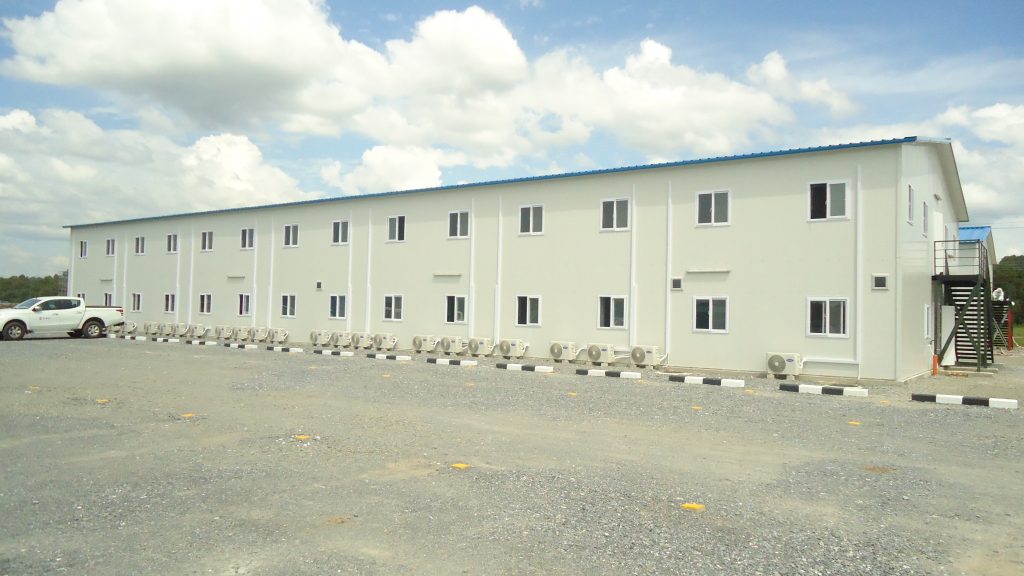
2. Understanding Lida Group: A Legacy of Innovation in Prefabricated Construction
Before delving into the specifics of its easy-assemble technology, it is essential to contextualize Lida Group’s position in the industry. Founded in [Year], Lida Group began as a small manufacturing firm focused on steel structures and construction materials. Over the years, it has grown into a global leader in prefabricated building solutions, with operations spanning [Number] countries, state-of-the-art production facilities, and a team of engineers, architects, and industry experts dedicated to innovation.
Lida Group’s mission has always been clear: to make high-quality construction accessible to all. This mission is rooted in the company’s recognition that traditional building methods exclude millions from safe housing—either due to cost, time, or lack of resources. To address this, Lida has consistently invested in research and development (R&D), allocating [Percentage] of its annual revenue to advancing prefabricated technologies. This commitment has led to a portfolio of patents, certifications (including ISO 9001 for quality management, ISO 14001 for environmental management, and OHSAS 18001 for occupational health and safety), and a reputation for delivering solutions that balance performance, affordability, and sustainability.
What sets Lida Group apart from other prefabrication companies is its focus on user-centric design. Unlike one-size-fits-all prefab solutions, Lida’s technologies are engineered to be adaptable—catering to diverse climate conditions (from tropical heat to arctic cold), cultural preferences (varying room layouts and aesthetic needs), and budget constraints. This adaptability is particularly evident in its sandwich panel homes, which leverage the company’s easy-assemble technology to meet the unique needs of communities across the globe.
Today, Lida Group serves a wide range of clients, including governments, non-governmental organizations (NGOs), construction firms, and individual homeowners. Its projects span residential housing, emergency shelters, construction site accommodations, and even small commercial buildings—all built on the foundation of its innovative easy-assemble technology.
3. The Science Behind Lida’s Easy-Assemble Building Technology
At the heart of Lida Group’s sandwich panel homes is its proprietary easy-assemble building technology. Unlike traditional construction, which requires on-site cutting, mixing, and fitting of materials, Lida’s approach shifts the majority of the building process to a controlled factory environment. This “off-site manufacturing” model ensures precision, reduces waste, and simplifies on-site assembly—but it is the technology’s unique design features that truly make it revolutionary.
3.1 Modular Design: The Building Blocks of Simplicity
Lida’s easy-assemble technology is built around a modular system. Each sandwich panel home is composed of prefabricated modules—walls, floors, ceilings, and even pre-installed fixtures (such as windows, doors, and basic plumbing)—that are manufactured in the company’s factories to exact specifications. These modules are designed to fit together like a puzzle, with standardized connections that eliminate the need for complex on-site adjustments.
For example, wall modules are equipped with interlocking grooves and metal fasteners that allow them to be joined quickly and securely. Floors and ceilings feature tongue-and-groove edges, ensuring a tight fit that prevents gaps or drafts. Even electrical wiring and plumbing lines are pre-routed through the modules, with clearly marked connection points that simplify hook-up on-site. This modularity means that a typical 2-bedroom sandwich panel home can be broken down into just [Number] modules—each lightweight enough to be transported in standard shipping containers and lifted into place with basic equipment (such as a small crane or even manual labor for smaller modules).
3.2 Tool-Free and Low-Skill Assembly: Democratizing Construction
One of the most transformative aspects of Lida’s technology is its tool-free or low-skill assembly requirement. Traditional construction demands skilled workers (carpenters, masons, electricians) who spend years training to master their crafts. Lida’s system, by contrast, is designed so that even workers with minimal experience can assemble a home—with just a few days of training.
The key to this is the technology’s standardized connections and intuitive design. Most modules are joined using simple fasteners (such as bolts or clips) that can be tightened with basic hand tools (a wrench or screwdriver) or even by hand. Pre-installed fixtures (like windows) are already fitted into their modules, so workers do not need to measure or cut openings on-site. Electrical and plumbing connections are color-coded and labeled, making it easy to match wires or pipes without specialized knowledge.
In fact, Lida Group provides a detailed, step-by-step assembly manual (with diagrams and videos) for each home design, guiding workers through every stage of the process. This not only reduces the reliance on skilled labor but also speeds up assembly time: a team of 4-5 semi-skilled workers can assemble a 50-square-meter sandwich panel home in just 3-5 days—compared to 4-6 weeks for a traditional home of the same size.
3.3 Quality Control: Ensuring Durability in Every Module
A common concern with prefabricated homes is durability—but Lida’s easy-assemble technology addresses this through rigorous factory-based quality control. In traditional construction, on-site conditions (weather, human error, material inconsistencies) can compromise the integrity of the building. Lida’s modules, however, are manufactured in controlled environments, where temperature, humidity, and material quality are closely monitored.
Each module undergoes multiple inspections before leaving the factory. For example, sandwich panels are tested for structural strength (to withstand wind, snow, and seismic activity), thermal insulation (to ensure energy efficiency), and water resistance (to prevent leaks). Connections are stress-tested to ensure they can withstand years of use. Even pre-installed fixtures are checked for functionality—windows are tested for airtightness, and plumbing lines are pressure-tested to detect leaks.
This quality control process ensures that every module meets Lida’s strict standards (and international building codes) before it reaches the construction site. The result is a home that is not just easy to assemble, but also durable: Lida’s sandwich panel homes have a projected lifespan of 30-50 years, with minimal maintenance required.
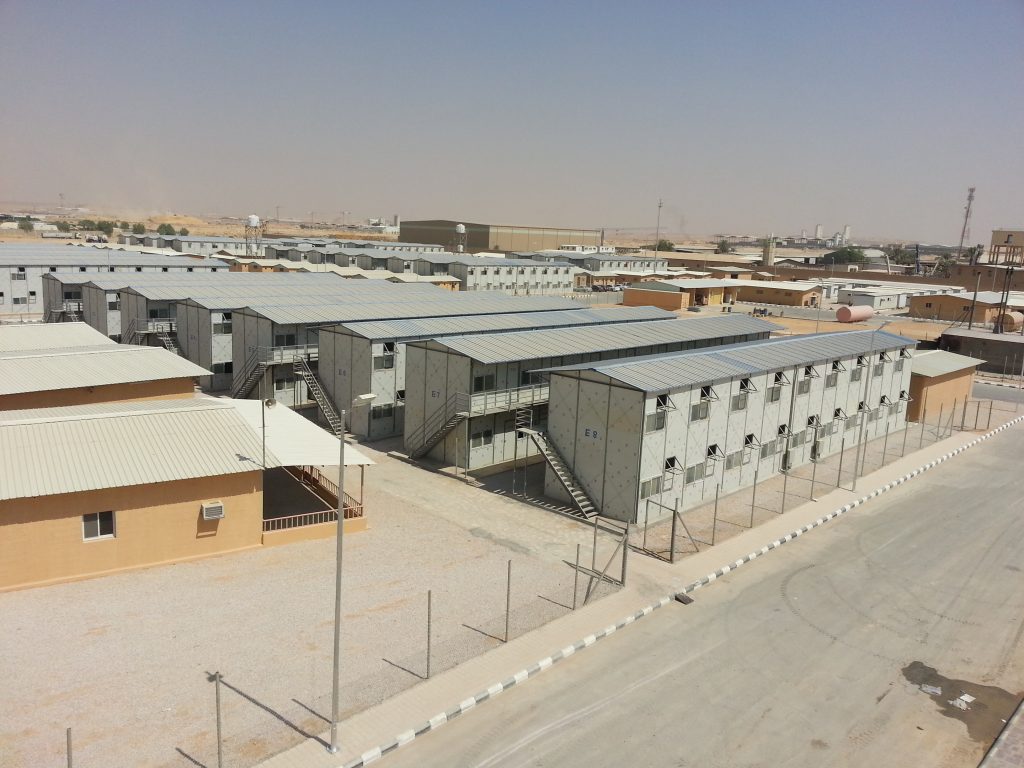
4. Sandwich Panels: The Foundation of Durability and Affordability
Lida Group’s easy-assemble technology would not be complete without its high-performance sandwich panels—the core material that gives these homes their durability, energy efficiency, and low cost. Sandwich panels are composite materials consisting of three layers: two outer skins (typically made of galvanized steel or aluminum) and a core (made of insulation material such as polyurethane foam, polystyrene, or rock wool).
4.1 Why Sandwich Panels? The Material Advantage
Sandwich panels offer a unique combination of benefits that make them ideal for low-cost, durable housing:
- Strength and Durability: The outer metal skins provide structural rigidity, making the panels resistant to impact, corrosion (thanks to galvanization), and weather damage (such as rain, wind, or UV rays). The core material adds additional support, ensuring the panels can withstand heavy loads (like snow on roofs) without bending or breaking.
- Thermal Insulation: The core insulation layer acts as a barrier against heat transfer, keeping homes cool in summer and warm in winter. This reduces the need for heating and cooling systems, lowering energy costs for homeowners—a critical advantage for low-income families.
- Lightweight: Despite their strength, sandwich panels are lightweight, which simplifies transportation and on-site assembly. A standard 2.4m x 6m wall panel weighs just [Weight] kg—compared to [Weight] kg for a traditional brick wall of the same size.
- Cost-Effective: Sandwich panels are cheaper to manufacture and install than traditional materials (bricks, concrete, wood). This is because they are produced in bulk in factories, with minimal waste, and require less labor to install.
Lida Group sources its sandwich panels from its own manufacturing facilities, ensuring that the materials meet the same high standards as its easy-assemble technology. The company offers a range of core materials to suit different climates: for example, polyurethane foam cores are ideal for cold climates (due to their high insulation value), while rock wool cores are preferred for fire-prone areas (due to their fire-retardant properties).
4.2 Customization: Tailoring Panels to Local Needs
One of the strengths of Lida’s sandwich panel system is its customizability. The company does not offer a single “one-size-fits-all” panel; instead, it designs panels to meet the specific needs of the communities where the homes will be built.
For example, in tropical regions (like Southeast Asia or Central America), Lida uses sandwich panels with thicker insulation cores and UV-resistant outer skins to protect against heat and heavy rain. In earthquake-prone areas (like parts of South America or Asia), the panels are reinforced with additional metal framing to enhance structural stability. Even aesthetic preferences are considered: outer skins can be painted in a range of colors, or covered with decorative materials (like wood veneer) to match local architectural styles.
This customization ensures that Lida’s sandwich panel homes are not just functional, but also culturally appropriate and well-suited to their environment—factors that are critical to the long-term success of housing projects.
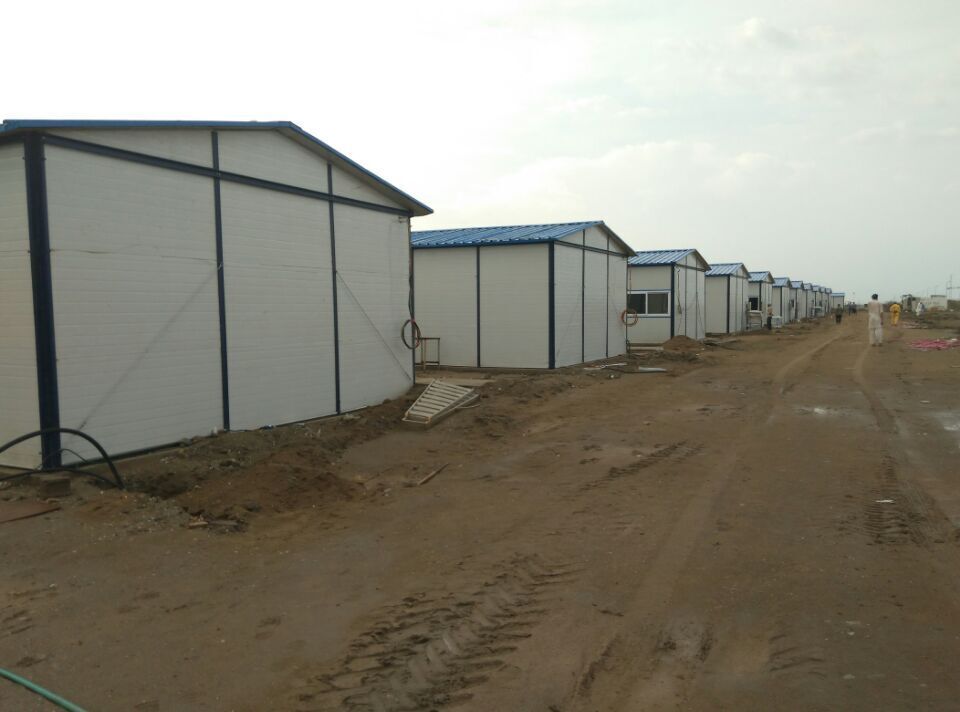
5. The Benefits of Lida’s Easy-Assemble Sandwich Panel Homes
Lida Group’s easy-assemble technology, combined with its high-performance sandwich panels, delivers a wide range of benefits to homeowners, builders, communities, and the environment. These benefits can be grouped into four key categories: affordability, efficiency, durability, and sustainability.
5.1 Affordability: Making Homeownership Accessible
The most significant benefit of Lida’s homes is their low cost. By shifting manufacturing to factories (reducing waste and labor costs) and simplifying assembly (lowering on-site labor expenses), Lida is able to offer sandwich panel homes at a fraction of the cost of traditional homes.
For example, a 50-square-meter, 2-bedroom Lida home costs approximately [Cost] USD to manufacture and install—compared to [Cost] USD for a traditional home of the same size. This price includes all materials, pre-installed fixtures (windows, doors, basic plumbing), and on-site assembly. For low-income families, this makes homeownership a realistic goal—rather than a distant dream.
Lida also works with local governments and NGOs to offer flexible financing options, such as low-interest loans or rent-to-own programs, further increasing accessibility. In some cases, the company partners with communities to train local workers in assembly, creating jobs that help families earn the income needed to purchase a home.
5.2 Efficiency: Saving Time and Resources
Traditional construction is notoriously slow—delays due to weather, labor shortages, or material shortages are common. Lida’s easy-assemble technology eliminates these delays by:
- Speeding Up Assembly: As mentioned earlier, a 50-square-meter home can be assembled in 3-5 days—compared to weeks or months for traditional construction. This means families can move into their new homes faster, and builders can complete projects more quickly (reducing overhead costs).
- Reducing Material Waste: In traditional construction, up to 15% of materials are wasted (due to on-site cutting, errors, or damage). Lida’s factory-based manufacturing ensures that materials are used precisely, with waste levels as low as 2-3%. This not only reduces costs but also minimizes the environmental impact of construction.
- Minimizing On-Site Disruption: Traditional construction requires large teams, heavy equipment, and long periods of on-site activity—all of which can disrupt local communities (noise, traffic, dust). Lida’s assembly process is quiet, requires minimal equipment, and is completed quickly, reducing disruption to neighborhoods.
5.3 Durability: Building Homes That Last
For low-income families, a home is often the most significant investment they will ever make. Lida’s sandwich panel homes are designed to protect that investment, with:
- Weather Resistance: The galvanized metal skins and water-resistant cores of the sandwich panels prevent damage from rain, wind, and UV rays. Homes are tested to withstand wind speeds of up to [Speed] km/h (enough to resist most hurricanes) and snow loads of up to [Load] kg/m².
- Corrosion and Pest Resistance: Galvanized steel is resistant to rust and corrosion, while the sandwich panel cores are not attractive to pests (like termites, which often destroy traditional wood homes). This means Lida’s homes require minimal maintenance over time—saving families money on repairs.
- Structural Stability: The modular design and reinforced panels make Lida’s homes resistant to seismic activity. In earthquake-prone regions, the homes are engineered to meet local seismic codes, ensuring they remain standing even during moderate earthquakes.
In fact, Lida Group offers a [Number]-year warranty on all its sandwich panel homes—a testament to the company’s confidence in their durability.
5.4 Sustainability: Building for the Planet
In an era of growing concern about climate change, the sustainability of construction methods is more important than ever. Lida’s easy-assemble sandwich panel homes are designed with the environment in mind, offering:
- Energy Efficiency: The high-quality insulation of the sandwich panels reduces energy consumption for heating and cooling by up to 40% compared to traditional homes. This lowers greenhouse gas emissions and reduces homeowners’ energy bills.
- Recyclable Materials: The metal skins of the sandwich panels are fully recyclable, and the core materials (like polyurethane foam) can be repurposed or recycled at the end of the home’s lifespan. This reduces the amount of construction waste sent to landfills.
- Reduced Carbon Footprint: Factory-based manufacturing uses less energy than on-site construction (due to centralized heating, cooling, and equipment use). Additionally, the lightweight panels reduce transportation emissions—since more panels can be transported in a single shipment.
Lida Group is also exploring ways to make its homes even more sustainable, such as integrating solar panels into the roof modules or using recycled materials in the sandwich panel cores. These innovations will further reduce the environmental impact of the homes while increasing their affordability (by lowering energy costs for homeowners).
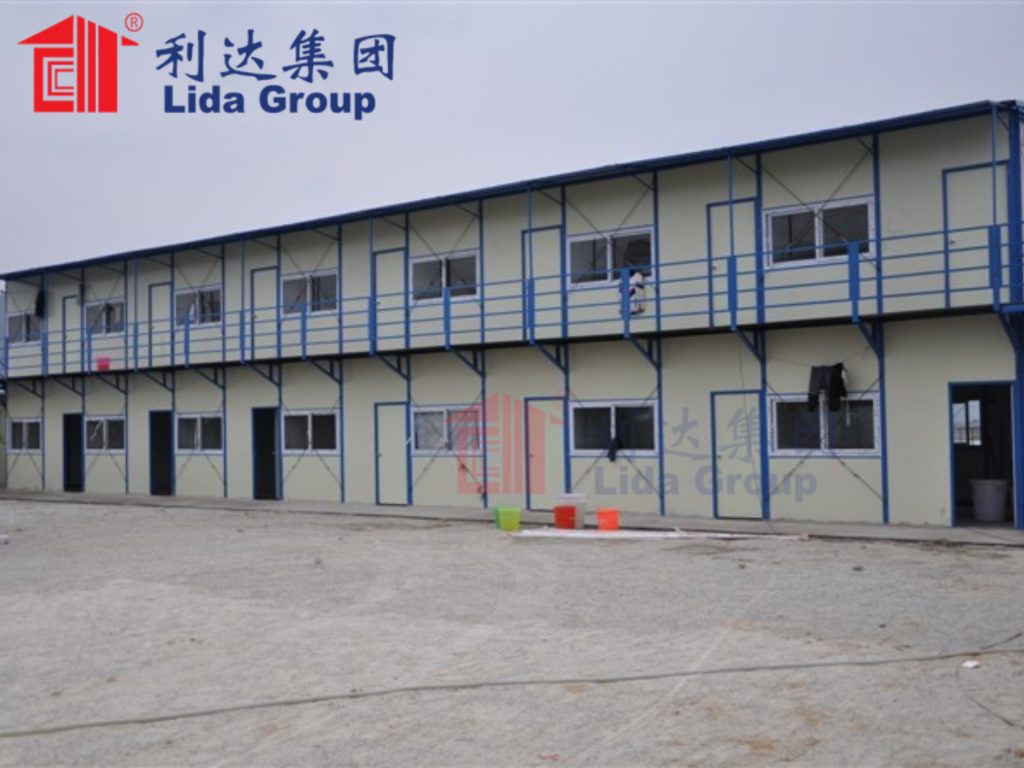
6. Real-World Case Studies: Lida’s Technology in Action
The true test of any construction technology is its performance in real-world settings. Lida Group’s easy-assemble sandwich panel homes have been deployed in a variety of contexts—from rural communities in developing nations to emergency shelters in disaster zones—with impressive results. Below are three case studies that highlight the technology’s impact.
6.1 Case Study 1: Rural Housing Project in Kenya
In 2021, Lida Group partnered with the Kenyan government and a local NGO to address the country’s housing crisis. Kenya has one of the highest urbanization rates in Africa, with over 60% of the population living in slums or informal settlements. The goal of the project was to build 1,000 affordable homes for low-income families in rural areas outside Nairobi.
Lida’s team worked with local communities to design homes that met their needs: 2-bedroom, 1-bathroom homes with a small kitchen and living area, built to withstand Kenya’s hot, dry climate (using sandwich panels with polyurethane foam cores for insulation and UV-resistant outer skins). The modules were manufactured in Lida’s factory in Tanzania (to reduce transportation costs) and shipped to the construction sites in standard containers.
Local workers were trained in Lida’s easy-assemble technology over a 5-day period. A team of 5 workers assembled each home in 4 days—meaning the entire 1,000-home project was completed in just 8 months (compared to the 2-3 years estimated for traditional construction). Each home cost approximately 15,000 USD—well within the budget of the target families, who were able to purchase the homes through a government-backed low-interest loan program.
A follow-up survey conducted one year later found that 98% of homeowners were satisfied with their homes. They reported lower energy bills (due to the insulation), no maintenance issues, and a greater sense of security (compared to their previous homes in slums). The project also created 500 local jobs (in assembly, transportation, and maintenance), boosting the local economy.
6.2 Case Study 2: Emergency Shelters in Turkey (Post-Earthquake)
In February 2023,
a catastrophic 7.8-magnitude earthquake struck southern Turkey, followed by multiple aftershocks. The disaster destroyed over 300,000 buildings, leaving more than 2 million people homeless—many facing freezing winter temperatures. In the immediate aftermath, the Turkish government and international aid organizations struggled to provide adequate shelter, as traditional tents offered little protection against the cold and rain.
Lida Group responded within 72 hours of the earthquake, dispatching a team of engineers and shipping 500 sets of sandwich panel home components to the affected regions (primarily Hatay, Kahramanmaraş, and Adıyaman). The company’s emergency shelter design was tailored to Turkey’s winter conditions: 30-square-meter homes with rock wool core sandwich panels (for fire resistance and insulation) and double-glazed windows to trap heat. Each shelter could accommodate a family of 4-5 and included basic fixtures like a heating unit, beds, and a small kitchenette.
The key advantage of Lida’s technology in this crisis was its speed. The prefabricated modules were transported via trucks to the disaster zones, where Lida’s team trained local volunteers and aid workers in assembly. With no prior construction experience, the volunteers learned to assemble a shelter in just 6 hours—far faster than any temporary structure available at the time. Within two weeks, all 500 shelters were fully operational, providing safe, warm housing for over 2,000 people.
Months later, aid organizations reported that Lida’s shelters remained in excellent condition, even after heavy snowfall and cold snaps. Unlike tents, which became damp and moldy, the sandwich panel homes stayed dry and insulated, reducing the risk of hypothermia and illness among residents. A local resident, Fatma Kaya, who lived in a Lida shelter with her three children, said: “After the earthquake, we thought we would freeze. But this home is warm, and it feels safe. My children can sleep through the night now.” The Turkish government later ordered an additional 1,000 shelters from Lida Group to support long-term recovery efforts.
6.3 Case Study 3: Construction Site Accommodation in Australia
In 2022, a major Australian construction firm was awarded a contract to build a 200-kilometer highway in Western Australia’s remote Pilbara region. The project required 500 workers to live on-site for 3 years—but the region had no existing housing infrastructure, and building traditional accommodation would have been costly and time-consuming (estimated at 18 months and 20 million USD).
The construction firm partnered with Lida Group to build a temporary housing village using its easy-assemble sandwich panel homes. Lida designed 125 homes (each 40 square meters, with two bedrooms, a bathroom, and a kitchen) and additional communal facilities (a dining hall, laundry, and recreation center) using lightweight sandwich panels with aluminum skins (resistant to Australia’s harsh UV rays) and polyurethane cores (for insulation against the Pilbara’s extreme temperatures, which range from 0°C in winter to 45°C in summer).
The modules were manufactured in Lida’s factory in China, shipped to Australia via sea, and then transported to the remote site by truck. A team of 10 Lida technicians trained 50 local workers in assembly, and the entire village was built in just 6 weeks—saving the construction firm 12 months of time and 5 million USD in costs.
Workers praised the homes for their comfort and durability. “I was worried about living in a prefab, but this home is better than my apartment in the city,” said John Smith, a highway construction worker. “It stays cool in summer and warm in winter, and there’s no dust or noise from the site.” The construction firm also noted that the village had a positive impact on worker morale and retention—turnover rates dropped by 30% compared to previous projects with traditional accommodation.
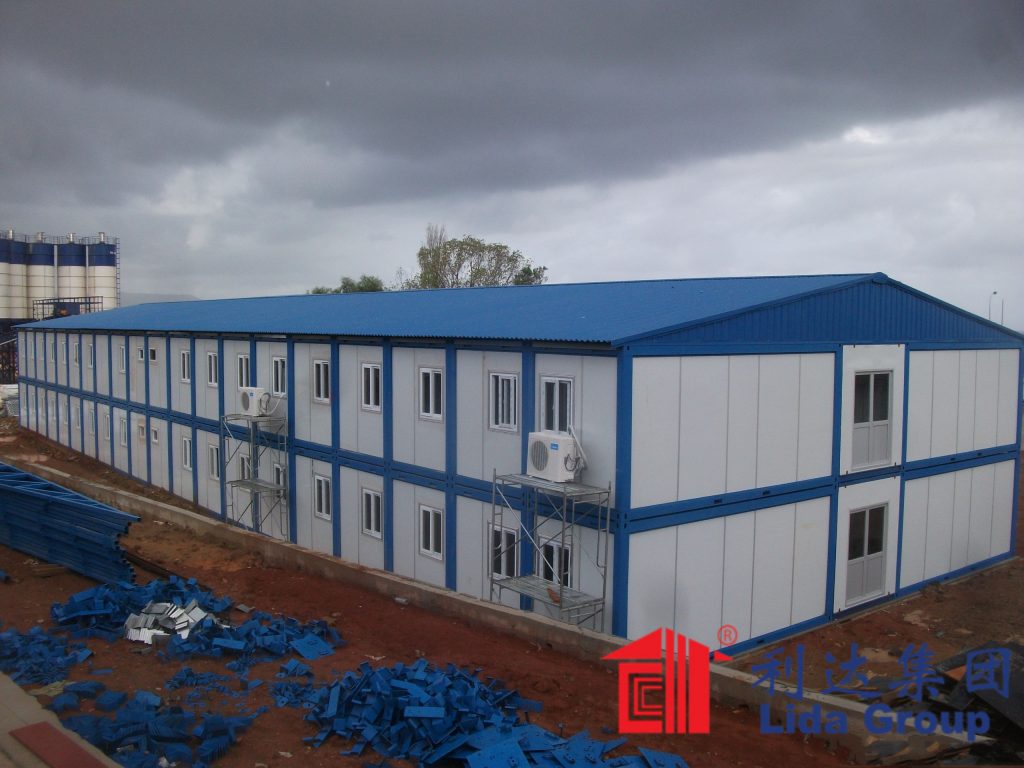
7. Market Feedback and Industry Recognition
Lida Group’s easy-assemble sandwich panel homes have garnered widespread praise from customers, industry experts, and global organizations—validating the technology’s ability to solve real-world construction challenges.
7.1 Customer Testimonials
Across continents, homeowners and clients consistently highlight three key strengths: affordability, ease of assembly, and durability. In Kenya, Peter Ochieng, who purchased a Lida home in 2021, said: “I used to rent a shack for 100 USD a month. Now, I own a home for just 15,000 USD—with a low-interest loan. The assembly was so fast; I moved in within a week of the modules arriving.” In Australia, the construction firm’s project manager, Sarah Johnson, added: “Lida’s technology transformed our project. We avoided delays, saved money, and our workers are happier. We’ll use their homes for every remote project from now on.”
Emergency response organizations also emphasize the technology’s value in crises. The International Red Cross, which partnered with Lida during the Turkey earthquake, stated: “Lida’s shelters are a game-changer for disaster relief. They’re faster to deploy than tents, more durable than temporary huts, and provide dignity to families who have lost everything.”
7.2 Industry Awards and Certifications
Lida Group’s innovation has been recognized with several prestigious awards. In 2022, the company won the “Global Prefabrication Innovation Award” at the International Construction Expo for its easy-assemble technology. The judges praised the technology for “democratizing construction by reducing reliance on skilled labor and making durable housing accessible to low-income communities.”
In addition to its existing ISO certifications, Lida’s sandwich panel homes have received certification from the International Code Council (ICC)—a globally recognized body that sets building safety standards. This certification ensures that Lida’s homes meet or exceed safety requirements in over 70 countries, opening up new markets for the company.
8. Future Outlook: Expanding Innovation and Global Reach
Lida Group is not resting on its laurels. The company has ambitious plans to expand its technology, reach more communities, and address emerging challenges in the construction industry.
8.1 Advancing Technology: Smart and Sustainable Upgrades
Lida’s R&D team is currently developing two key upgrades to its easy-assemble system:
- Smart Home Integration: By 2025, the company plans to integrate basic smart features into its homes, such as solar-powered LED lighting, smart thermostats (to optimize energy use), and mobile app-controlled locks (for security). These features will be optional, allowing clients to choose upgrades based on their budget. Early tests in Kenya showed that solar-powered homes reduced energy costs by 60% for homeowners—making the upgrade a cost-effective long-term investment.
- Eco-Friendly Materials: Lida is exploring the use of recycled materials in its sandwich panels. The team is testing panels with cores made from recycled plastic bottles and outer skins made from recycled aluminum. Initial results show that these “green panels” are just as strong and insulating as traditional panels but reduce the company’s carbon footprint by 25%. Lida aims to make recycled panels the standard option by 2026.
8.2 Expanding Global Presence
Lida Group plans to enter three new markets by 2024: Brazil, India, and Nigeria—countries with severe housing shortages. In Brazil, the company will partner with local manufacturers to build a factory in São Paulo, reducing transportation costs and creating local jobs. In India, Lida will focus on rural housing projects, where traditional construction is slow and expensive. In Nigeria, the company will work with the government to replace slums in Lagos with affordable sandwich panel homes.
The company also aims to increase its emergency response capacity. Lida is establishing regional “disaster stockpiles” in key locations (such as Dubai, Panama, and Singapore) to store prefabricated modules. This will allow the company to dispatch shelters to disaster zones within 48 hours—cutting response time in half.
8.3 Addressing Urban Housing Challenges
While Lida’s homes are currently popular in rural and remote areas, the company is adapting its technology for urban environments. In dense cities like Mumbai and Mexico City, space is limited—so Lida is developing “stackable” modular homes that can be built vertically (up to 3 stories high). These stackable homes use the same easy-assemble technology but include reinforced connections to ensure stability. The first pilot project, in Mumbai, will launch in 2024, with 50 stackable homes designed for low-income families.
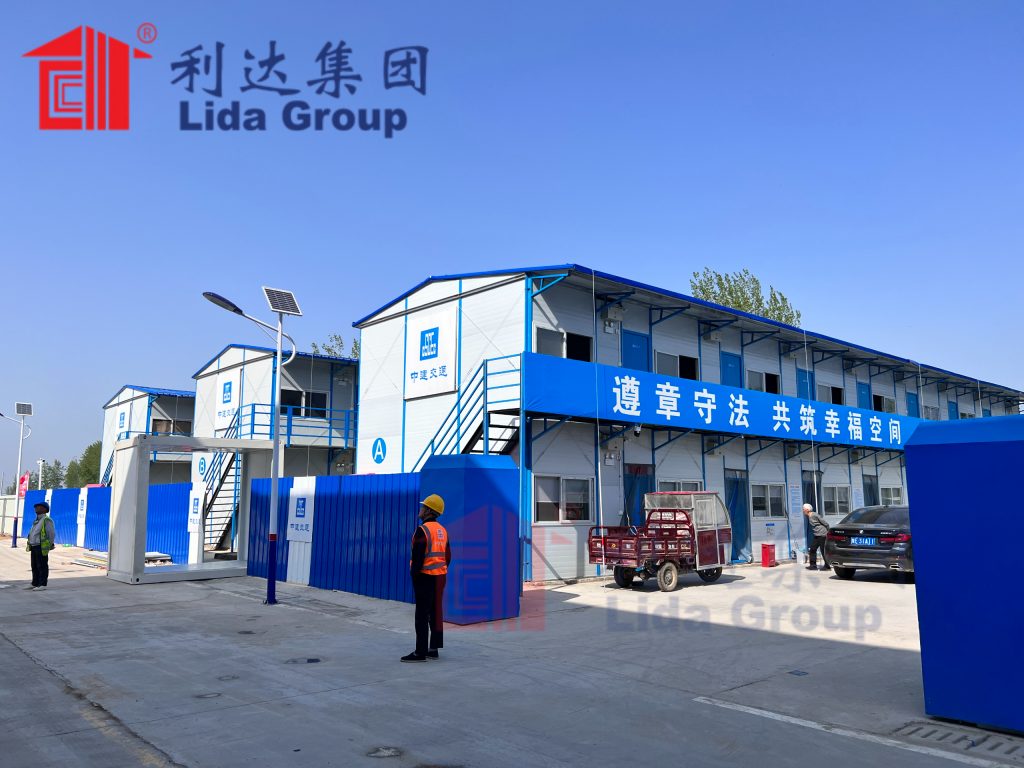
9. Conclusion
Lida Group’s innovative easy-assemble building technology is more than just a construction solution—it is a powerful tool for addressing the global housing crisis. By combining modular design, low-skill assembly, and high-performance sandwich panels, Lida has created a system that simplifies construction, reduces costs, and delivers durable, sustainable homes to communities in need.
The evidence is clear: in Kenya, the technology turned slum dwellers into homeowners; in Turkey, it provided life-saving shelter to earthquake victims; in Australia, it transformed remote construction projects. Across all contexts, Lida’s homes offer three core benefits that traditional construction cannot match: affordability (making homeownership accessible to low-income families), efficiency (cutting construction time by up to 90%), and durability (ensuring homes last for decades with minimal maintenance).
Moreover, Lida’s commitment to sustainability—through energy-efficient insulation, recyclable materials, and future green upgrades—aligns with global efforts to combat climate change. The company’s focus on user-centric design, meanwhile, ensures that its homes are not just functional, but also culturally appropriate and tailored to local needs.
As Lida Group expands its technology and global reach, it has the potential to impact millions more lives. In a world where 1.6 billion people lack adequate housing, and skilled labor shortages slow construction projects, Lida’s easy-assemble system offers a path forward. It proves that construction does not have to be slow, expensive, or exclusive—and that everyone, regardless of income or location, deserves a safe, decent home.
In the end, Lida Group’s success is not just about building homes—it is about building hope. By simplifying construction and making quality housing accessible, the company is helping communities thrive, families secure their futures, and nations address one of their most pressing challenges. For the global construction industry, Lida’s technology is a blueprint for a more inclusive, efficient, and sustainable future.

Related news
-
Disaster Relief Transformed: Lida Group's Prefab Mobile Houses Offer Rapid, Easy-Assemble Shelter with Low-Cost Durability
2025-09-24 15:57:45
-
Lida Group Makes Quality Housing Accessible with Low-Cost Sandwich Panel Houses Designed as Easy-Assemble Prefab Mobile Homes
2025-09-24 17:52:15
-
Why Developers Choose Lida Group's Easy-Assemble Building Systems for Deploying Low-Cost Sandwich Panel Houses Quickly
2025-09-24 14:20:47
contact us
- Tel: +86-532-88966982
- Whatsapp: +86-13793209022
- E-mail: sales@lidajituan.com


